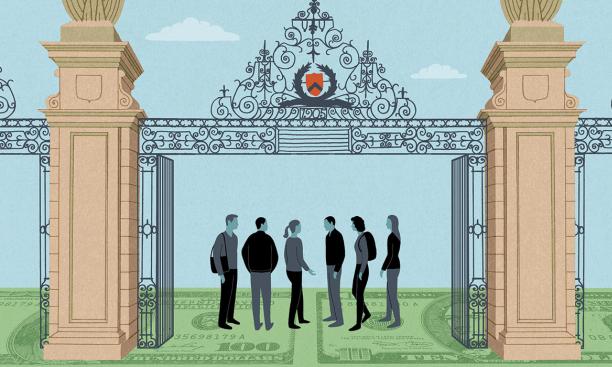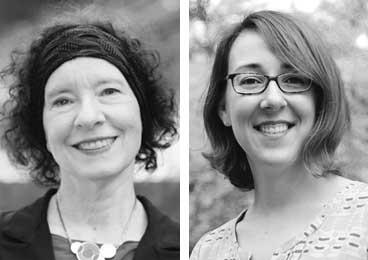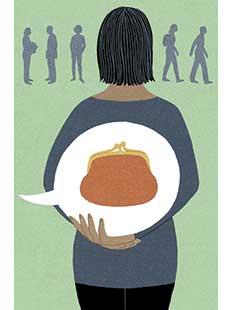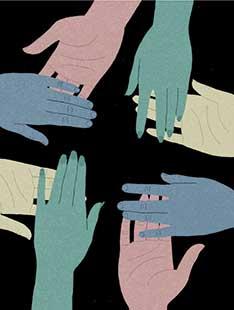

In recent years, Princeton, along with other elite schools, has stepped up its efforts to recruit low-income applicants. As President Christopher Eisgruber ’83 explained to the Class of 2018 in his Commencement address last year: “At Princeton we believe in socioeconomic diversity because we know that to achieve excellence as a University and as a nation we must draw talent from every sector of society.” Twenty percent of students in Princeton’s Class of 2022 were eligible for federal Pell grants, an indicator of low-income enrollment — almost triple the percentage of eligible students in the Class of 2008.
As the “Orange Bubble” diversifies, what happens when the new, still relatively small population of low-income students mingles with more affluent peers in classrooms, sports, jobs, and other activities? How do students manage class disparities in their everyday interactions with friends, roommates, and teammates? That is what we have been investigating for the past seven years. We focus on students’ economic transactions, including bartering, swapping, money loans, gift exchanges, and the sharing of expenses. What does it mean, for instance, for students to split the bill for dorm purchases, a spring-break vacation, or dinner at a restaurant when one student draws her money from her parents’ monthly allowance while her roommate pays with money earned from a campus job?
Negotiating students’ class differences poses special challenges at an institution that is expected to foster egalitarian ideals and practices, endorsing what we call a democratic pact. Within college gates class differences should not matter — everyone is equally expected to convert into a Princeton student. But how can students maintain the egalitarian code in a context of steep economic inequality?
To be sure, the dilemmas created by cross-class relations are not a 21st-century Princeton phenomenon. Zoom back to 1915, when the University dining halls began hiring “needy” student waiters — worrying some people, according to The Daily Princetonian, “that Princeton democracy — or aristocracy, they are not sure which — would lead to friction between the servers and the served.” The Princetonian’s proposed solution reveals the tensions involved in mingling hierarchical worker/patron with student/peer relations. Waiters, the paper recommended, “must remember they are acting as professional servers for the time being and need expect no exceptional demonstration of gratitude or cordiality from the students at the table. But the relation is by no means too businesslike to exclude the ordinary courtesies of life elsewhere on the Campus.” Early 20th-century dilemmas persist, albeit in a transformed social landscape.
In our search for answers, in 2011 we began speaking with Princeton students, conducting in-depth interviews with 59 students and organizing several focus groups. We concentrated on interactions between highly affluent (zero financial aid or minimum aid) and low-income (full financial aid or close to full aid) students. While there is significant overlap between full financial aid and first-generation students, we focused most of our attention on low-income students. We also spoke to 16 University officials involved in student life to clarify institutional practices and policies.
When we started these conversations, issues of class were still largely hidden on campus. Repeatedly, students told us that this was the first time they had spoken so candidly about money or about class differences. Listening to their accounts, we noticed three different patterns in students’ readiness to reveal their economic status to peers, including friends. We call them “outing,” “silencing,” and “passing.”
Some students had no reservations about outing themselves by openly sharing the challenges of being poor at Princeton, sometimes finessing their outing with humor. “I always make a joke about being poor,” volunteered Laura, a philosophy student on full financial aid and working two jobs. “I have no problems with that. I think it’s just like a kind of funny thing, I’m at this crazy school where there are castles everywhere, and it’s like, OK, yeah, I’m broke, but this is nice.” Other students comfortably shared with peers that they received aid but drew the line at identifying themselves as full-aid recipients. A full-aid student pointed out that since most Princeton students receive some form of financial support, she had no qualms in acknowledging her financial-aid status, because “that doesn’t really convey too much information, and I thought that’s fine to say, ‘Yeah, I’m on financial aid ... just like most of Princeton.’”
The 2014 establishment of the Hidden Minority Council, a group set up to “advocate for the first-generation and low-income voices that aren’t being heard,” helped transform outing social class into a legitimate institutional practice by providing a safe site for students not only to discuss issues of class but to post their photos and share their biographies on the council’s website. Still, outing can turn out to be socially perilous. Jill, a science major who self-identified as “dirt poor,” experienced the social effects of disclosure when she “accidentally” confided her money problems to her friends. She recalled their startled expressions: a “look on their face ... that they don’t realize that they’re making, kind of like shocked.” She wondered how that revelation had changed her friends’ view of her.
Remaining silent about class, therefore, can seem the safer strategy. Repeatedly, low-income students recounted how they kept their financial struggles private in order to spare their wealthier friends discomfort. Tim told us why he remained mostly silent about money issues when he was around his three wealthy roommates. Not, he insisted, because he was embarrassed by his poverty, but because “all of us are great friends ... I don’t talk about financial things with them because I don’t want them to feel uncomfortable.”
Yet other students picked a more radical strategy: Passing, they concluded, was the best option. Marion, a low-income senior, regretted having spoken too openly about her financial situation with her group of wealthy friends. “If you don’t have money,” she had concluded, “you should try to lie about it. ... It’s actually a very easy thing to feign. ... The sheer fact that you are at Princeton already makes people assume you are probably well off.” Even if she had to turn down a trip with her friends, they would not have recognized “the difference between me saying no because my parents say no, and me just being like, I can’t just spend that money.” But when you are truthful, she said, “these people do kick you out of their friend groups.”
While they certainly don’t face the same challenges as their less affluent peers, wealthier students nevertheless employed similar strategies when dealing with issues of class. Melanie, for example, told us that any financial discussion became an uncomfortable reminder of the contrast between her privileges and other students’ financial worries. She realized that while money did not have to factor in her choices, “it affects the decisions that others make.”
Considering such lopsided economic worlds, how do affluent and low-income students manage shared expenses in ways that preserve egalitarian relationships? We identified three approaches: first, avoidance, the dodging of potentially uncomfortable exchanges; second, “I’ll pay for you” offers; and third, “like family” analogies, labeling friendship relations as kin ties.
How does avoidance work? If they recognized a friend’s financial pressures, for instance, affluent students tried not to suggest expensive venues or purchases. In buying furniture for their dorm, Cora emphasized how she would avoid putting her low-income roommate “in a situation where we would purposely buy something really outrageously expensive.” Low-income students were not blind to such avoidance maneuvers. Wesley knew that his wealthier friends realized that “I don’t have a ton of money. And so they’ll never like say we need to go to a really expensive restaurant. Or I need you to chip in $100 for this gift. ... And so because those things haven’t come up, it hasn’t harmed our friendship.”
Low-income students, meanwhile, turn down invitations to dinners or vacations that would require unaffordable expenditures. Or they make minor compromises to minimize costs — for example, by eating dinner beforehand and ordering only dessert. Rather than being upfront on why they cannot afford to share expenses, students may dodge the issue by offering excuses. Emma, an affluent senior, only recognized the reasons for one of her closest friend’s recurrent evasions after the girl finally confided that she did not want to spend $10 for a dinner celebrating the completion of their group’s senior theses. Before that, “she’s always been like, ‘Oh, you know, I’ll just like meet you guys later, I’m tired’; or ‘Oh, I have work to do anyway. I don’t have time,’ or something.”
Emma then opted for a second approach, proposing to pay her friend’s share of the dinner bill, since “we are all supposed to do this together, like we are supposed to be celebrating, like I’ll pay for you ... .” But the friend did not accept her offer and joined the group only after the meal. We repeatedly heard similar “I’ll pay for you” stories about when well-intentioned affluent students tried to cover expenses for a financially strapped friend. However grateful financial-aid students may feel, such kind offers can represent disturbing markers of inequality.
For the donor, a friend’s reluctance to accept a treat may seem baffling. Yet the negotiation can become a lesson in cross-class relations. It took some time for Cora to realize that her lower-income friends “don’t enjoy necessarily you being like, ‘I’ll pay for it, it’s fine. Don’t worry.’” At first, she could not quite understand their reluctance: “I realize in my head I never thought about that as being uncomfortable or offensive, because it was kind of like, it’s money and ... I’m happy to spend it on you if you will come have dinner with me right now.”
Confronted with the awkwardness of unequal sharing, some close friends found an alternative to avoidance and “pay for you” solutions. They reframed their friendship as a kin tie. Alisa, on full financial aid, and Bill, who did not receive any financial assistance, told us in separate conversations about sharing their expenses during a joint European research trip. While Alisa recognized that Bill “probably did let me get away with spending more” from their pooled money than he did, neither was concerned by the disparity since they saw themselves as quasi-siblings: “It’s sort of like if you went on vacation with your brother and he was putting in a little more money. It’d be sort of like, well, it’s like family members, money’s kind of ours.” Bill confirmed that Alisa was “the sister that I never had.” Given such closeness, to him the financial imbalance hardly mattered: “It’s like you don’t keep track of ... how often you are there for your friend when they need a shoulder to cry on.” Their sharing of money thus turned into a symbolic hug, an expression of family-like affection that made their unequal contributions legitimate and even admirable.What explains these various approaches to dividing money and expenses? As students with stunningly different resources participate in a shared college economy, they engage in what we call relational work. They search for the right kind of arrangement for sharing expenses that maintains their implicit democratic pact: an arrangement corresponding to their relationship as friends and peers. And that should not be mistaken for the unequal relations typical of philanthropic donors and charity recipients or commercial lenders and debtors. To be sure, the students’ approaches don’t always succeed, as deliberate actions or unintentional blunders can bring class inequalities to the foreground. When that happens, students’ disagreements over sharing expenses usually have less to do with the amount of money involved than with what the money signals about their unequal relationship.
We found similar mechanisms in our study of students’ money loans and gift exchanges. Students struggle to give and receive money and in-kind gifts in ways that do not undermine their friendship. For example (as we heard during our interviews), if a wealthy student notices her low-income roommate does not own a winter coat, how can she give her a coat and how can her roommate accept the gift without defining the coat as a charitable donation? How is the gift reciprocated?
These glimpses into students’ class-based interactions are first steps into a largely unexplored world. We know very little about the frequency of students’ cross-class interactions at Princeton and elsewhere. Certainly, some students keep their relationships mostly within their own class and seldom experience some of the exchanges we report here.
And while we focus here on class, we need to specify how differences of gender, race, ethnicity, and national origin intersect in shaping students’ economic experiences. We are also tracking historical variations in Princeton students’ cross-class exchanges.
Why does our study of Ivy League students’ everyday economic transactions matter? After all, the small sums of money involved may seem trivial next to the trillion dollars in outstanding student debt or other instances of steep inequalities. But precisely in times of radical economic inequality, an Ivy League campus such as Princeton provides a unique microcosm of how inequality is negotiated face to face within a privileged setting. As recruitment of low-income applicants intensifies, scrutinizing students’ cross-class experiences may contribute to the program’s success. Local, on-the-ground knowledge of what goes on during students’ four years of close interactions can inform institutional policies aimed at better incorporating low-income students.


